Sections
Pick of the Week – Apple Watch
Jon Gruber’s considered analysis of the wider implications of Apple creating the Apple Watch is a long but essential read. He suggests it is their first product that transcends categorisation as a “technology” product: “Apple Watch is not a product from a tech company, and it will not be understood, at all, by the tech world”. Instead they are taking aim at securing a new niche in which fashion, and marketing are the most important considerations as evidenced by the luxurious advertising images and range of launch variants they will offer: “Apple is taking on the entire hundred-dollar-and-up watch industry at once, with a range of models and prices that span the gamut from $349 to $10,000 or more. They never even mentioned the word ‘smartwatch’ last week, just ‘watch’, and never once even acknowledged any competition from the tech industry.” Gruber suggests the following starting prices to illustrate his point:
- Apple Watch Sport (aluminum/glass): $349 (not a guess)
- Apple Watch (stainless steel/sapphire): $999
- Apple Watch Edition (18-karat gold/sapphire): $4,999
If these figures are correct, the Apple Watch will be positioned right across the spectrum from entry level to luxury. His call on a $5000 starting price for gold Edition has been widely picked up and should be contrasted with suggestions that come in a lot lower just over the $1000 mark. Where Apple eventually settle with the Gold Edition will reveal a lot about their ambition. Given the materials they have chosen, it looks safe to bet on the extreme luxury end of the spectrum. Such an approach is inevitably going to alienate some of Apple’s core support and indeed already has: “It feels like Apple capitulating to a very specific form of “luxury” appearance and material and bringing all of its baggage along with it, instead of forging something new.” Selling the proposition will require a very different approach to marketing for Apple and in a great post Drew Crawford suggests this may have been the real reason behind the recent Beats acquisition. Apple Watch may have a revolutionary input method like previous famous successes and a great multi-disciplinary team behind it but can it capture the imagination of the public and change its behaviour? Twenty years ago, similar existential challenges faced the first mass market mobile phones: “If you tell the young people of today this they won’t believe you, but in the mid 1990s most people thought that mobile phones were an expensive niche product without mass-market potential. We already had phones, and pay phones, so why would you need this other thing? ” We all know how that played out. There are already strong indications that Apple will be able to deliver a compelling proposition for developers:
brb gonna stare at this Apple Watch transition for the rest of my life pic.twitter.com/Ix2N7QJEiw
— Eric Robinson (@eric_robinson) September 19, 2014
More Apple
- Benedict Evans offers an analysis of how iPhone6 aims to address all the remaining objections current premium Android users might have had with iPhones up till now. The consumers in question would typically have invested in top end Samsung products in the past. As part of “re-inforcing its ecosystem at the high-end” Apple offered this Apple support guide highlighting how to migrate from Android to iOS. It’s another sign of the cultural change at Apple since Tim Cook took over. One can’t imagine Steve Jobs condoning such a move. He probably wouldn’t have enjoyed this extended BusinessWeek profile of Cook either – it details how Cook is “remaking company culture” at Apple largely it seems by making it a more open and collaborative place to work.
- It’s clear that Apple is going to sell a lot of iPhone6 regardless with reportedly 4m preorders in the first 24 hours and Digitimes reporting that the Apple supply chain is gearing up to 80 million sales in 2014 alone. WSJ provided an insight into the biblical scale production effort reporting that hundreds of thousands of Foxconn employees are struggling to keep pace with demand especially on the larger iPhone6 Plus model which it is claimed is suffering from a poor display yield rate: “The company has more than 200,000 workers in the Zhengzhou site, dedicated to just making new iPhones and key components such as metal casings [and] is operating about 100 production lines around the clock in Zhengzhou.” Here’s a picture of the launch day queue in Ginza, Tokyo:
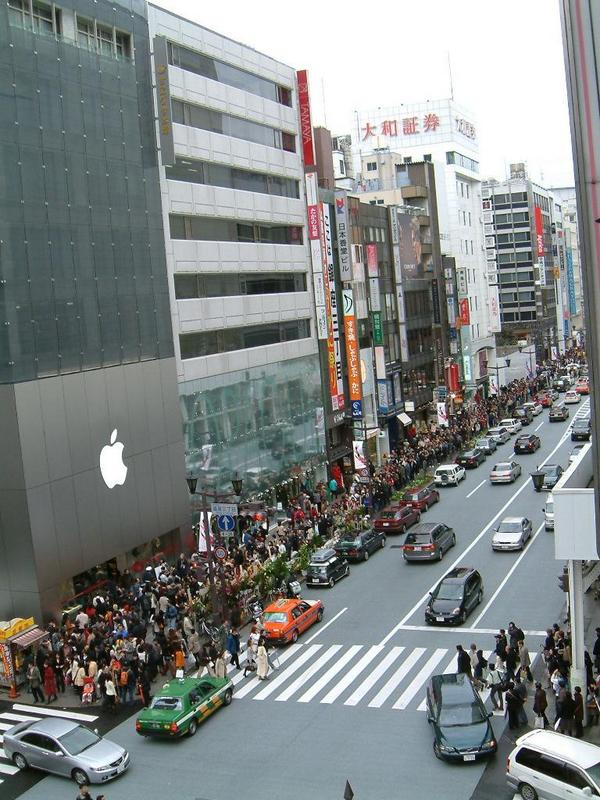
- Early hands-on iPhone6 reviews from Jon Gruber and TechCrunch are both positive.
- Apple Pay is already taking shape as a 3rd party developer proposition with Apple publishing clear developer guidelines and Stripe announcing support a very short time later quickly followed by Amazon:
Amazon one of the first to roll out sign-in with Touch ID. Interesting. pic.twitter.com/zJVpPK2oWU
— M.G. Siegler (@mgsiegler) September 17, 2014
Smartphones/OEMs
- Amazon’s Fire Phone is now available in the US for just 99c on a 2 year AT&T contract which suggests it’s not doing that well despite the attractions highlighted in the Amazon press release: “Dynamic Perspective, Firefly, world-class customer support with Mayday, free unlimited cloud storage for photos, 32GB of storage—and, for a limited time, customers get 12 months of Prime membership with Fire phone, which includes unlimited streaming of tens of thousands of movies and TV episodes from Prime Instant Video, access to over a million songs to download or stream from Prime Music, over 500,000 books to borrow from Kindle Owners’ Lending Library and free two-day shipping on tens of millions of items.”
- This photo essay from MIT Technology Review provides a glimpse into the process used by GT Advanced Technologies to manufacture laminated . GT can now “make about 10 sapphire sheets from the same amount of material that would go into just one solid display. That could help make sapphire ubiquitous in smartphones. Indeed, it would probably only add a few dollars to the cost of a phone. And it could allow sapphire to be used on displays for larger devices, such as tablets.” Part of the process involves irradiating circular wafers of sapphire with Hydrogen ions traveling at nearly 20,000 kilometers per second to slough off layers just 26 microns thick that are laminated onto glass:
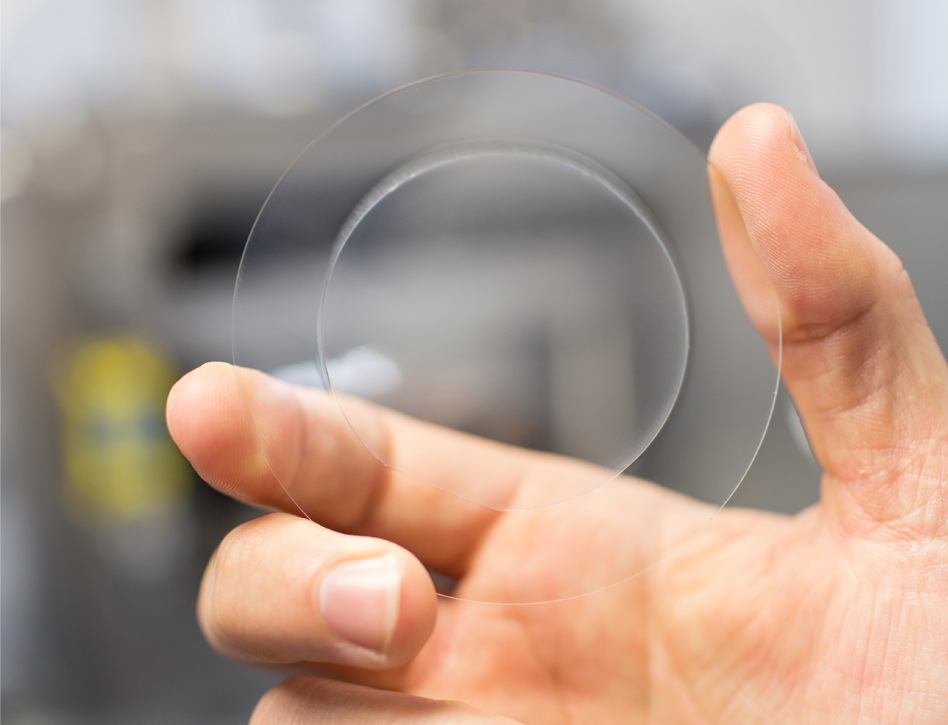
- A Sony blog piece from Takao Yagi, an engineer working on Xperia display system software, provides a window into the kind of hard technical work that goes on within leading OEMs to build genuine competitive differentiation into flagship products. Yagi outlines Sony efforts to improve outdoor screen brightness on the Z3 without compromising battery life: “we’ve managed to increase the brightness of the screen by approximately 20% and still set it in a smartphone that can handle up to two days’ usage”. Sony are then able to present this information in a way that helps boost their technology credentials:
Cameras
- Photokina, the world’s leading imaging fair, took place in Cologne this week so it seems apt to highlight some of the products announced there. It offered a good place to take stock of the changing nature of photography and how thoroughly smartphone technology has disrupted it. As the Photokina video somewhat simply puts it “175 years of photography. A great deal has changed”:
- Leica are making just 600 very special M Edition 60 digital cameras to celebrate the 60th anniversary of their M Series. Each will cost €15k and for that you get a pretty basic unit with the only indicator a red light that flashes when the SD card is in use: “the only way to review your shoot is to pop the SD card into a computer. There’s no USB port to speak of, or an HDMI output. Not even a monochrome LCD readout. A large ISO dial (from 200-6400) occupies the area where you’d normally find a display.”
- The Panasonic Lumix DMC-CM1 is an Snapdragon 801 Android 4.4 powered smartphone with an epic integrated camera that showcases Panasonic’s rich digital photography heritage. The phone camera “packs a 20MP sensor attached to a f/2.8 Leica DC Elmarit lens that sports a mechanical shutter and a manual control ring.” The sensor is a huge one inch in size and the phone looks amazing. Engadget highlight the old school feel, “all austere chrome with cracked-leather style back, and .. a weird retro-futuristic look that’s tremendously attractive.”
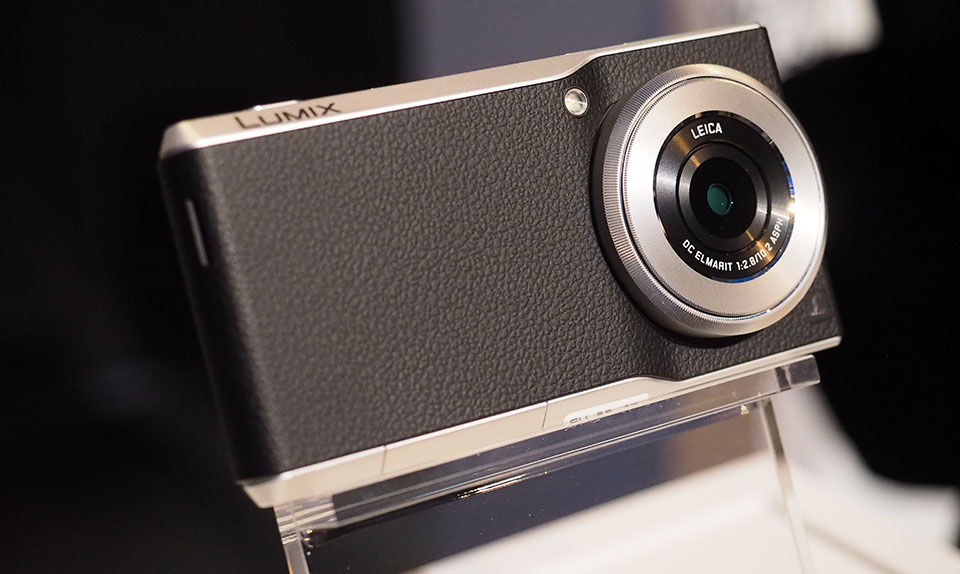
- Panasonic’s promo video provides further detail on the Lumix DMC-CM1:
https://www.youtube.com/watch?v=fJiJfGY_tLA
- SanDisk have launched the world’s biggest SD card, a monster 512GB designed for 4k video storage. Way back when the technology was first used in mobile devices like the Psion 5mx, 4MB SD cards were plenty.

Google/Android/Apps
- Android One launched in India this week with a lot of fanfare from the Google side with three Mediatek powered KitKat based handsets from Karbonn, Micromax and Spice. It is vitally important for Google to succeed with Android One in what is the second biggest engine for smartphone growth in the coming few years since China is already lost to a host of Landfill Android OEMs who use Android without Google services (ie. AOSP). The Register previewed the three handsets unhelpfully invoking the Landfill reference. Google’s minimum Android One hardware standards include:
- 4.5in display
- 1GB of RAM
- 5MP rear camera, 2MP front facing camera
- Mediatek quad core processor
- Ability to run Android L “due for release soon”
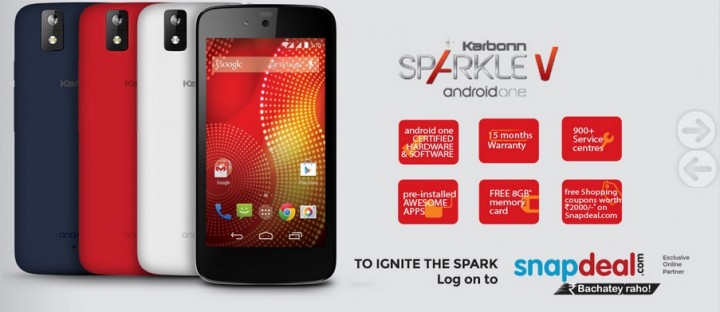
- TechInAsia suggest Android One could be a game changer for budget smartphones and provide stiff competition to Xiaomi etc for these key reasons:
- The handsets constitute genuine quality hardware and software at ~$100 price point.
- They all run stock Android with very little modification with Google-driven software updates “guaranteed”
- Global software has been combined with local hardware expertise and local OEMs.
- A global product has been launched in India first.
- John Carmack was the creator of Doom and Quake. In a curious twist of fate he’s currently CTO at Oculus, recently acquired by Facebook. In this interview, he offers some interesting insights on the challenges of mobile VR development on Android. Oculus use the Unity framework so are insulated to a degree from the vagaries of fragmentation but not enough for him to to pass judgement: “Android setup and development really does suck. It’s no fun at all.” The other key takeaway for Carmack is the need to understand power management tradeoffs on Android: “if you go ahead and fire up all four cores at the top clock rate and draw a bunch of stuff, you overheat within minutes. If you really load everything onto the system that can draw power, you will probably thermally throttle down in under a minute. So you literally just can’t use all the capabilities of the system at the same time.”
- Google have launched the first cross-platform Android apps that will work ‘as is’ on Chromebook as part of their efforts to unify the two platforms which is “interesting for Chromebooks, but more interesting for one potential avenue it points to for Android phones – will we be using ChromePhones in 5 years?” The apps include Evernote and Duolingo and they are available on Chrome Web Store now.
- Google have also released an updated Hangouts app that updates the UI in line with Material Design guidelines and more interestingly integrates Google Voice: “Google has now integrated free VoIP calls to all phones in the U.S. and Canada — even if you don’t have Google Voice. Calls to other Hangouts users are always free, no matter where they are.” This is the sort of use case operators hope VoLTE will address but in a more general way allowing multiple third parties to innovate on the voice experience.
- An Instagram engineering blog post provides some insight into how they redesigned their Android app with three key goals in mind namely “making the app faster, more beautiful, and more screen-size aware”. They were able to cut the size of the app by half as well as it’s start time by using a standard engineering approach: “To achieve these gains, we spent a lot of time profiling the app, both using the Android TraceView tool, and manual timing statements in the code. We made a lot of small improvements, like rewriting inefficient JSON parsing code and lazy-loading components that weren’t really needed for startup. “
- 1.5million MAUs (monthly active users), 15 messages/sec. Figures that are pretty respectable. Yo has gone a long way in a short time.

Asia
- iPhone6 pricing as divulged by Apple only applies to US and is specifically for a two year contract:
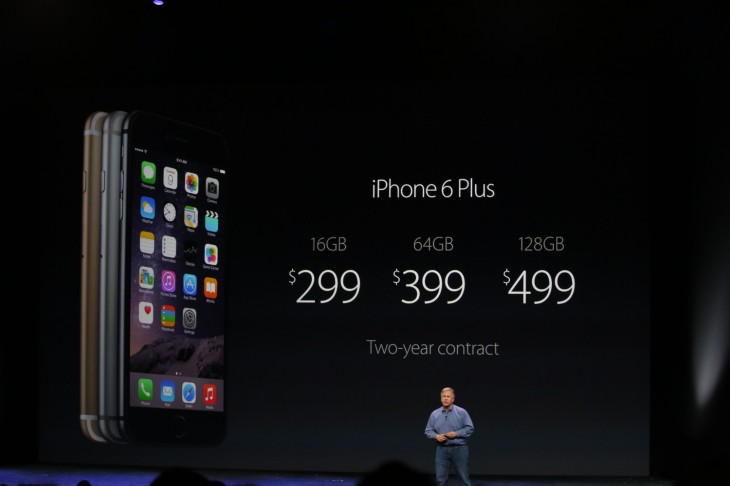
- Corresponding iPhone6 pricing in Asia will definitely be in the premium category with TNW reporting that it “could cost consumers in Asia more than $1,000 to get their hands on the jumbo iPhone” where it will face very stiff competition from Xiaomi, OnePlus, Samsung and others. However, continuing the theme of the week, having an iPhone6 is a price many will be willing to pay to join the Apple Club as TNW go on to concede: “Nonetheless, there are plenty of Apple aficionados and affluent folks across Asia who we suspect will queue loyally and buy the new iPhones once they hit the market.”
- It seems that in order to succeed as a foreign company in China, flexible ethics are required as Western companies “may have to put moral outrage to the side in their pursuit of new business.” Given the scale of the opportunity many will opt to flex their morals.
Cloud/Infrastructure
- Larry Ellison, Oracle’s “first and only CEO” had to go eventually and now has announced he will step down as CEO though he isn’t leaving the company it seems.
- Christos Kozyrakis was a leading cloud computing researcher at Stanford. He’s now working at Mesosphere on Apache Mesos, a “datacentre level OS”. His view of where enterprise computing is going is worth reading: “The future of enterprise computing looks a lot like a cloud, and that cloud will increasingly run datacenter-level operating systems.”

- Salesforce have had to concede to the Snowden effect and open a European datacentre to address the privacy and security concerns of many of their European customers.
- Cloudbees is betting on Continuous Integration (CI) in the cloud or CIAAS to coin a term supported by Jenkins and have pivoted to only focus on that proposition being ubiquitous in the near future. They have some evidence to support their strategy: “the Jenkins ecosystem has boomed. Where there were 200 plug-ins a few years ago there are now at least 1,000″.
Services
- Netropolitan is “an online country club for people with more money than time” where annual membership is an exclusive $9000 a year. It’s the extension of the gated community only on the web: “The entire service is inaccessible from the public Internet, including search engines. All member transmissions to and from Netropolitan are encrypted” but on the plus side “Absolutely no third-party or display advertising is sold or shown.” The publicity picture is a home run on the rich jetsetter checklist:

Security
- The fake base station attack is a growing menace in China where thanks to collapsing prices and the inventiveness of the Shenzen electronics scene: “When the [GSM] system was designed 30 years ago, cell tower hardware was too expensive for such an attack to be practical. Now, a fake base station can be built for as little as $700, making it much easier to turn a profit.” Hackaday recently outlined a setup involving a Beagleboard running OpenBTS which came in around $750. It seems the US is not immune either:
- Apple two-factor authentication (2FA) is being beefed up in the wake of the recent celebrity photo hack. It sounds like it could end up impacting existing third party apps like SmoothSync that use iCloud credentials because “beginning October 1st, app-specific passwords will be necessary for third-party apps that don’t support two-factor (like Outlook or Thunderbird) to access iCloud.”
Wearables/InternetOfThings
- PCH have been previewed here before as a custom hardware design and manufacture outfit that operates in Shenzen and the US. Liam Casey their CEO spoke at TechCrunch Disrupt about the difficulty of hardware innovation and the key role of prototyping in supporting it: “‘Product innovation in the hardware space is extremely challenging. In the technology world we have product roadmaps and that can really slow down the whole process from an idea to being ready for the consumer.’ Tools like 3D printing, modules by littleBits (a PCH partner), and Arduino, however, have allowed a ‘renaissance in prototyping’ to emerge.” PCH run a hardware incubator called Highway1 that can help startups get into prototyping.
- With the smartwatch a major focus of attention, The Kernel have interviewed a number of successful specialist traditional watchmakers. As a group they express some concern at the impact of technology but mostly don’t see smart and traditional watches as a zero sum game. Leo Padron‘s take is particularly memorable: “Electronics go rancid over time, capacitors especially being the first things to fail in any circuit. You might be able to still turn on your smartwatch in five to 10 years, but without your current mobile content ecosystem somehow preserved, you’ll soon find it pretty limited. In 20 to 25 years, it probably won’t turn on at all, because the electronics have degraded. In the meantime, your mechanical watch will still be ticking. At your son’s wedding, at his children’s wedding, and his children’s children’s wedding. For some people, this is more important than getting a wrist tweet, and it is what powers the mystique of a good watch.”
Programming/Games
- PyConUK took place this weekend and proved to be a whole lot of fun with talks covering a range of topics from Raspberry Pi, Minecraft, data mining to games programming and Python ecosystem status. A separate dedicated Education Track helped provide a forum for teachers and (on the Saturday) children to explore programming tuition with a view to supporting its elevated place in the UK curriculum. A number of Nao robots were made available and a robot programming challenge arranged to write Python for them. The robots can be programmed to exhibit different “behaviours” by wiring together a number of input/output boxes in an environment similar to Scratch. When you click one of these boxes you enter an edit box environment which exposes the underlying Python:
- On the day of the dojo, however, the Nao robots proved to be rather temperamental and performed best with their built-in routines which inevitably included dancing to Gangnam Style and Thriller among other delights:
- Technology education startup Treehouse have released an Android app and also made an available a free introduction to Swift – one of the first such courses to appear. Relatedly, Apple are now reviewing Swift coded iOS app submissions for inclusion in the App Store.

- Microsoft have officially confirmed they will be acquiring Minecraft parent Mojang for $2.5bn with The Verge speculating there could be a future tie-in to Windows Phone. This inside perspective from Mojang is short but quite revealing: “As you might already know, Notch is the creator of Minecraft and the majority shareholder at Mojang. He’s decided that he doesn’t want the responsibility of owning a company of such global significance. Over the past few years he’s made attempts to work on smaller projects, but the pressure of owning Minecraft became too much for him to handle.” Satya Nadella’s explanation of the purchase is equally revealing: “If you talk about STEM education, the best way to introduce anyone to STEM or get their curiosity going on, it’s Minecraft.”
Work/Culture
- Scotland ended up voting No to independence by 55-45. However, in the run in and indeed on the night, Twitter was consistently more pro Yes right across Europe with the exception of England. The comparison below shows a clear discrepancy between social media intent and actual results which seems to reflect a clear age skew in the voting: “Younger people are more likely to vote for independence, while pensioners were more inclined to stick with the Union”. Two observations from this – i) social media reactions cannot yet be interpreted as an accurate gauge of the wider population, ii) if the age skew is structural, Scotland could tilt to Yes within a generation.
Very cool live @Trendsmap of Yes-No Twitter sentiment of #indyref. http://t.co/x3nre9Helr ht @louiseroug pic.twitter.com/QKudez6X1T
— Jim Roberts (@nycjim) September 18, 2014

- Steve Jobs was a ‘low-tech’ parent who strictly limited the amount of access his children had to computing technology in line it seems with other technology leaders according to this NYT article: “I’ve met a number of technology chief executives and venture capitalists who say similar things: they strictly limit their children’s screen time, often banning all gadgets on school nights, and allocating ascetic time limits on weekends.”
- Doug Coupland gets all nostalgic for his “pre-Internet brain”: “after more than 10,000 hours of exposure to the internet and digital technologies such as my iPhone, my brain has been rewired – or, rather, it has rewired itself. Science has a name for this process: Hebb’s Law … Ask yourself if you’ve spent 10,000 hours on the internet, then think about your own brain. It’s clear there’s a new neural reality. If you’re in doubt, look at people younger than you. Do they interact with other people and the world differently from the way you did when you were their age? Of course they do. So, sometime between then and now, big changes have occurred. Our attention spans are collapsing: we want movies; we want music; we want unfiltered information. We want season four of Dexter. And we want it all now.”
- Liverpool FC are using digital and social media to boost global engagement and sales, a strategy that seems to be working. The club has “70 people working on the media side” – more than some new media companies.
- A refreshingly irreverent look at the predictions of the so-called smartest guys in the room, McKinsey, finds little to be impressed about: “All the grunt stuff consultants do analysing markets can be done by anyone with an internet connection. The two things that people will always be better at than machines are motivating others and coming up with original ideas. Yet on neither score does the consultant look good … if the best McKinsey can do after years of study is say that technology, globalisation and ageing will feature in the next 50 years – a robot could have come up with that in a jiffy.”

